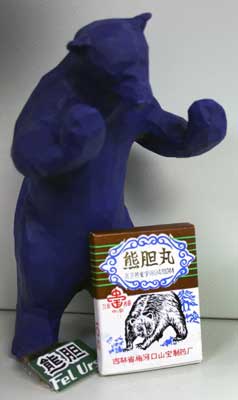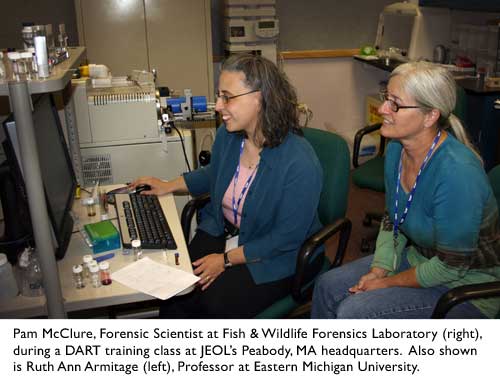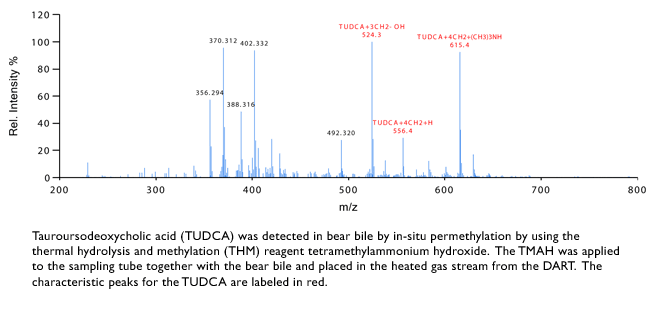 Can chemistry help save bears from an inhumane, unthinkable lifetime of torture, or from gruesome and wasteful poaching? Let’s hope so, but for now, bears are the victims of lucrative trade in the bile that their gall bladders produce. Bear bile has been widely used in Traditional Chinese Medicine (TCM) for generations. It is harvested at farms in Asia where living bears are kept caged for years, while each day their gall bladders are tapped by a catheter to extract the bile.
Can chemistry help save bears from an inhumane, unthinkable lifetime of torture, or from gruesome and wasteful poaching? Let’s hope so, but for now, bears are the victims of lucrative trade in the bile that their gall bladders produce. Bear bile has been widely used in Traditional Chinese Medicine (TCM) for generations. It is harvested at farms in Asia where living bears are kept caged for years, while each day their gall bladders are tapped by a catheter to extract the bile.Viable synthetic and herbal substitutes have been developed to offer the same healing properties – breaking down gallstones, improving eyesight, and protecting the liver. But to satisfy cultural traditions, the bile from living bears continues to be illegally smuggled into the United States in the form of various powders, liquids, or tablets, or sometimes disguised in a myriad of products. It is also smuggled out of the United States or sold in the form of gall bladders extracted from bears who have been slaughtered just for that reason, leaving the remains of the bear save for the organ and its paws.
Enter the National Fish and Wildlife Forensics Laboratory in Ashland, Oregon. It’s the only lab of its kind in the United States, and it has been called the “Scotland Yard for Crimes against Wildlife.” Forensic scientists from the lab recently brought samples of bear bile (and with it the plight of the unfortunate bears) to JEOL’s attention when they attended an AccuTOF-DART training course in our Peabody headquarters, learning to integrate Direct Analysis in Real Time mass spectrometry into the lab’s already rigorous testing procedures for the number of unidentifiable samples they receive each day.

DART can be used as a rapid way to identify ursodeoxycholic acid (UDCA), the active ingredient in bear bile. “When we’re asked to see if something contains real bear bile we get samples in a dried flaky form or as a liquid in a vial,” says Pam McClure, explaining that there’s no end to the ingenuity of methods of transporting the contraband, and she’d prefer not to give anyone ideas by reporting on them. Still, chemical analysis reveals the truth. “We’ve been checking samples for bear bile for years using Thin Layer Chromatography and FTIR. Our DART is so new we don’t actually use it yet. Chip (Dr. Chip Cody, mass spectrometry product manager at JEOL) developed a method for us to test for UDCA and we did check a bile sample and were able to identify the compound in there.” She added that the lab always conducts two methods of analysis to be certain of the findings.

In the event that the lab receives what may be an entire gall bladder from a bear that has fallen victim to poachers in the U.S., the chemistry lab takes a back seat and the genetics section of the lab performs DNA analysis to confirm the species. Sometimes the organ is found to be from a pig, and the hopeful smuggler had been planning to sell it as a gall bladder from a bear. Likewise, what is sold as TCM containing bear bile may not contain it at all, or what is sold as specialty shampoos and beers with medicinal properties may contain bile.
Harvesting bear bile is a horrid practice that has come to the attention of several agencies that have set out to raise awareness and help to protect the bears, typically Moon Bears from Asia, who suffer their entire lives and develop diseases during the harvesting. Changing cultural traditions may take time, but Pam is hopeful, though sickened by the practice and by seeing a lot of unspeakable things in her job. “It’s encouraging to see people in those countries that allow bear bile farming starting to be aware that this is not a good thing to do. Not to mention that a lot of those bears get infections and cancers, but still the farmers sell the bile from the bears until they die even though they know it’s contaminated.”
Let’s hope that with synthetic and herbal substitutes and the diligence of the forensics lab that specifically protects wildlife, we’ll see this practice die out, and not the bears.
Additional Reading: The lab is described in an issue of the Audubon magazine.
Watch the Video:
Wildlife Forensic Lab Livestream – YouTube
Source: Jeol.com

